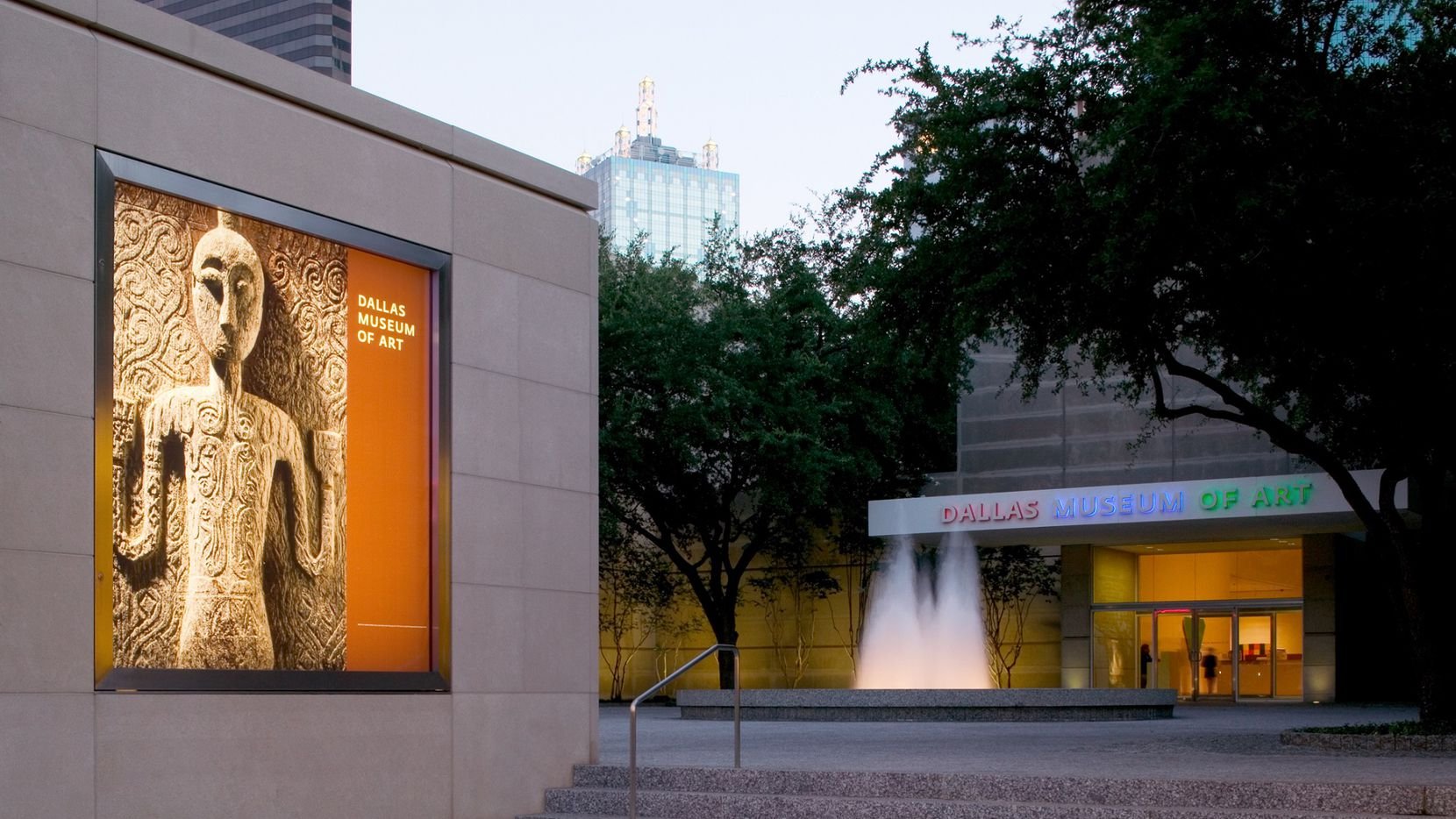Emblems of Affiliation: Sculptural Arts and Ornament from Island Southeast Asia at the Dallas Museum of Art
Emblems of Affiliation
Sculptural Arts and Ornament from Island Southeast Asia
at the Dallas Museum of Art
Curated by Steven G. Alpert
The Dallas Museum of Art's critically acclaimed assemblage of Indonesian sculpture, textiles, and ceremonial adornments involved the inspirational input of Mr. Jean-Paul Barbier, the communal participation of seven museum directors, and three dedicated curators over a span of 36 years. The creation of this collection's driving force involved the enthusiasm and prescient judgment of Mrs. Eugene McDermott, her foundation, and her family. Margaret McDermott's generous philanthropy and devotion to the arts are legendary in the city of Dallas.
Our collective efforts culminated in the award-winning catalog, The Eyes of the Ancestors (Dr. Reimar Schefold and Steven Alpert, Editors), with individual chapters written by independent scholars. Like the collection itself, it broke new ground in presenting and describing Indonesian art from local traditions.
The DMA's catalogue contains 110 main plates, of which 108 were sourced or collected by Steven G. Alpert. This level of involvement made the aesthetic threads of the collection remarkably consistent. It provided a rare opportunity for a benefactor, a major museum, and an expert to work in close cooperation with one another for many years. We can all look back with pride and satisfaction that this is a collection of uncompromising quality, one that pays homage to its creators, contemporary stakeholders, and admirers of Island Southeast Asian art. At various times, the Indonesian government bestowed recognition upon Mrs. McDermott and the DMA's collection, referring to it as a pusat or 'center' or a suar cahaya, a 'beacon of light' for disseminating knowledge and appreciation for Indonesia's diverse and extraordinary artistic traditions.
Mrs. McDermott would often query: "Is it a masterpiece?" or "How good is it, really?" or "How does it rank when compared to other examples of world-class art?" In this same vein, I will always remember the poignant comment of the former director of the Sarawak Museum, Peter Kedit, himself an Iban, encouraging me "to show our art, but put it next to Picasso."
In terms of numbers, the DMA's Indonesian collection is actually a small one. It does not rival in numbers or breadth of material what one finds say in the Nationaal Museum van Wereldculturen or other noteworthy worldwide museum collections of these artistic traditions. The DMA's collection is not topologically based or loaded with ethnographic ephemera. It is a small, intimate collection whose raison d'etre is demonstrable quality with a dedicated 'fine art' orientation. The number of per capita masterworks within its purview is inordinately high.

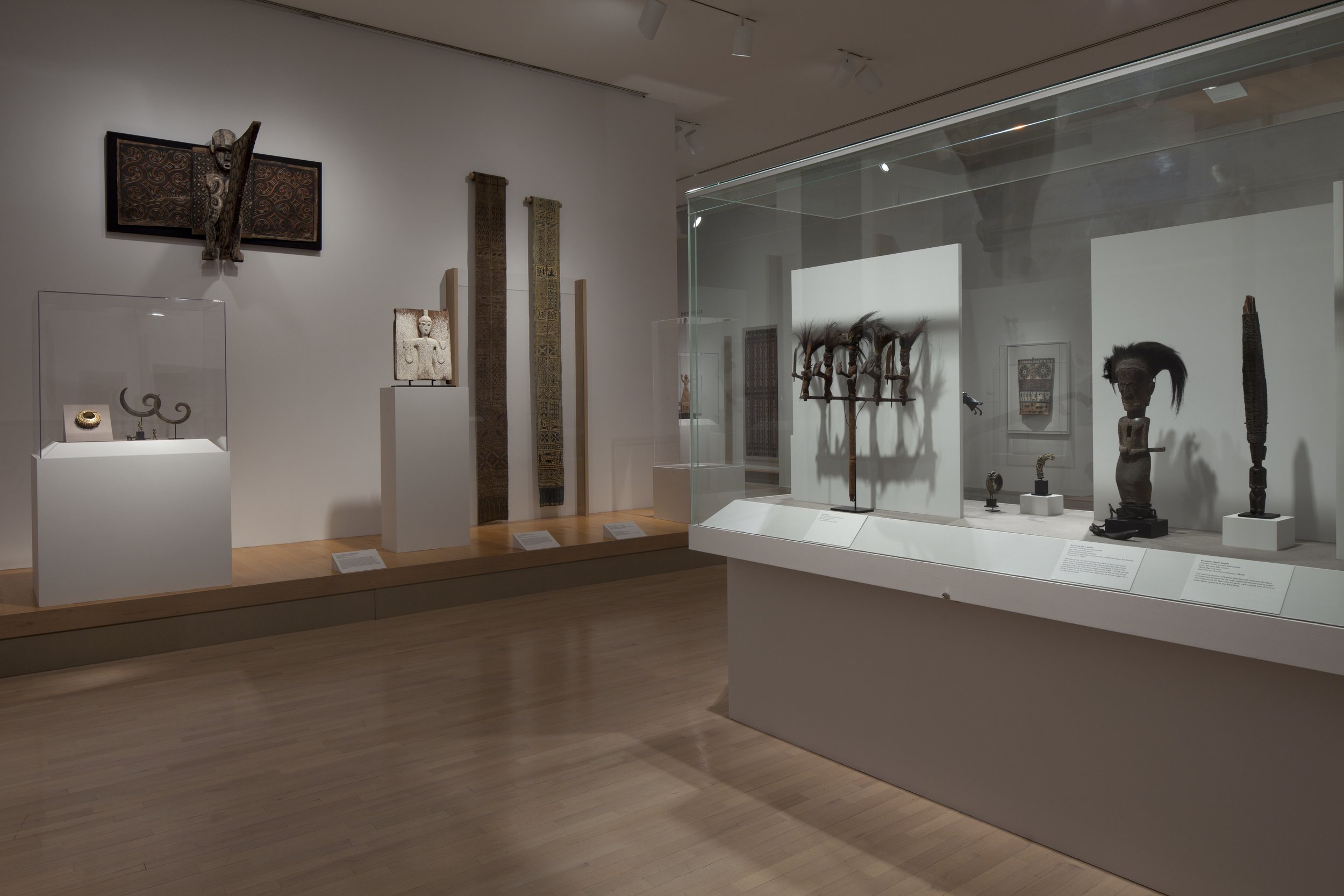
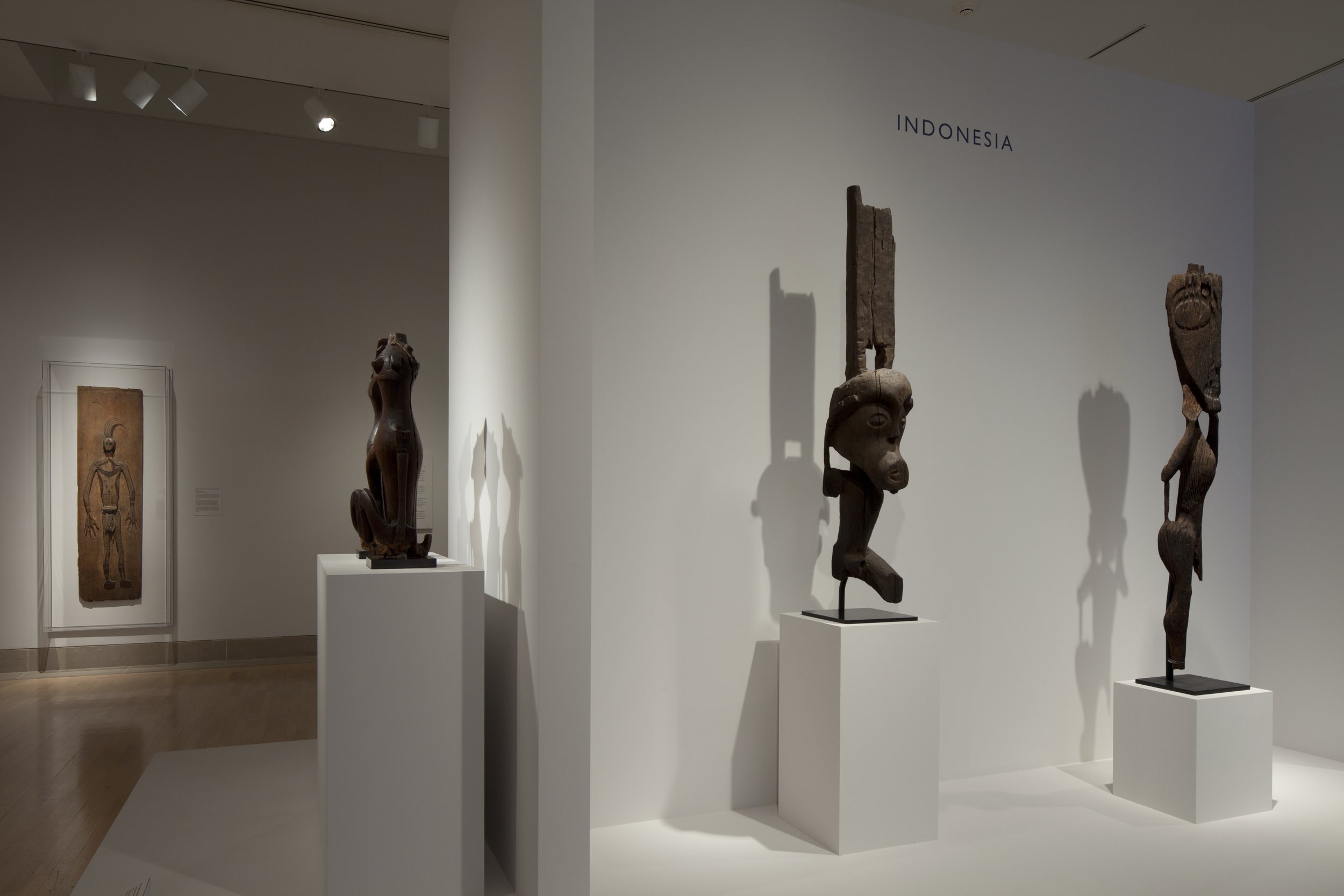

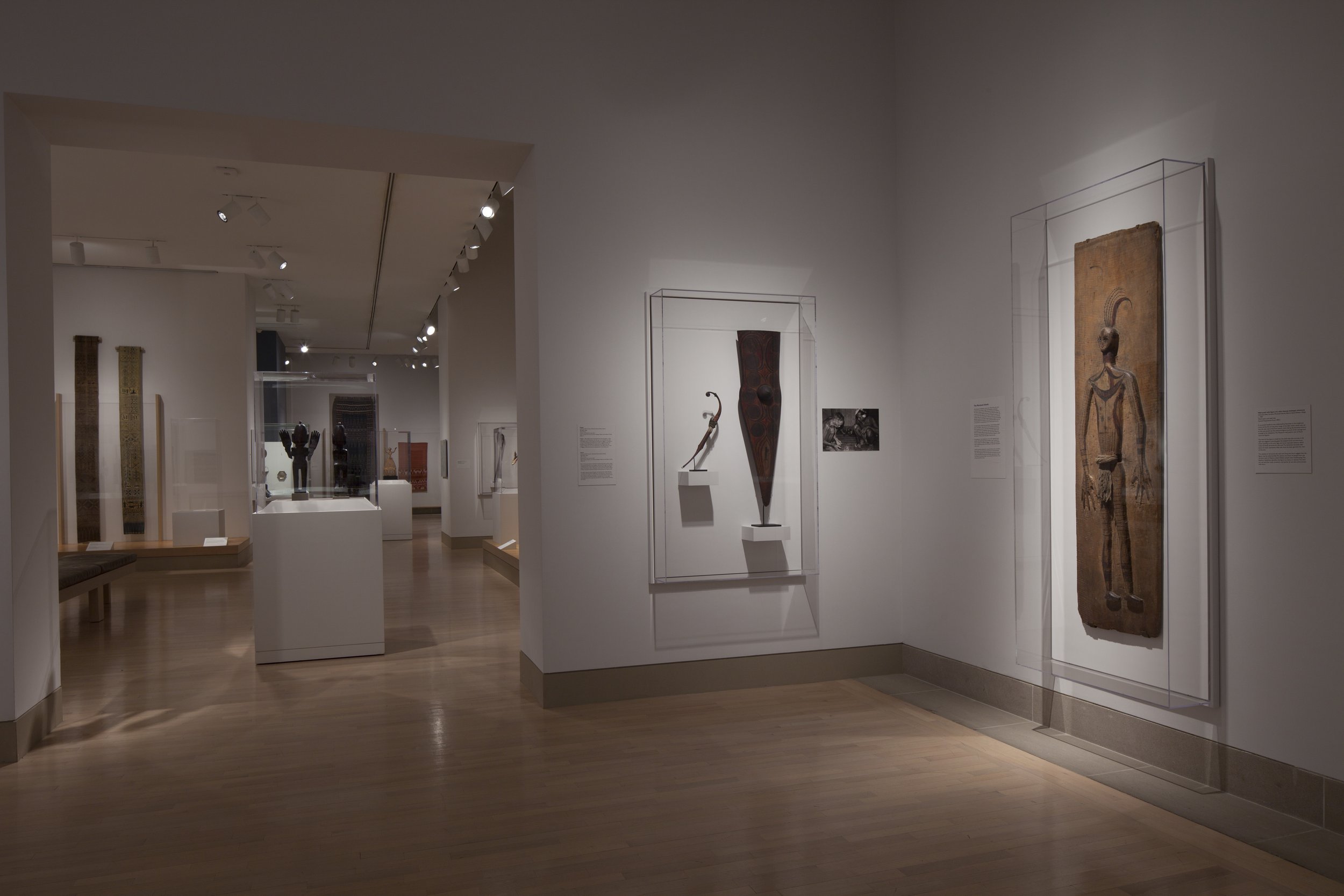
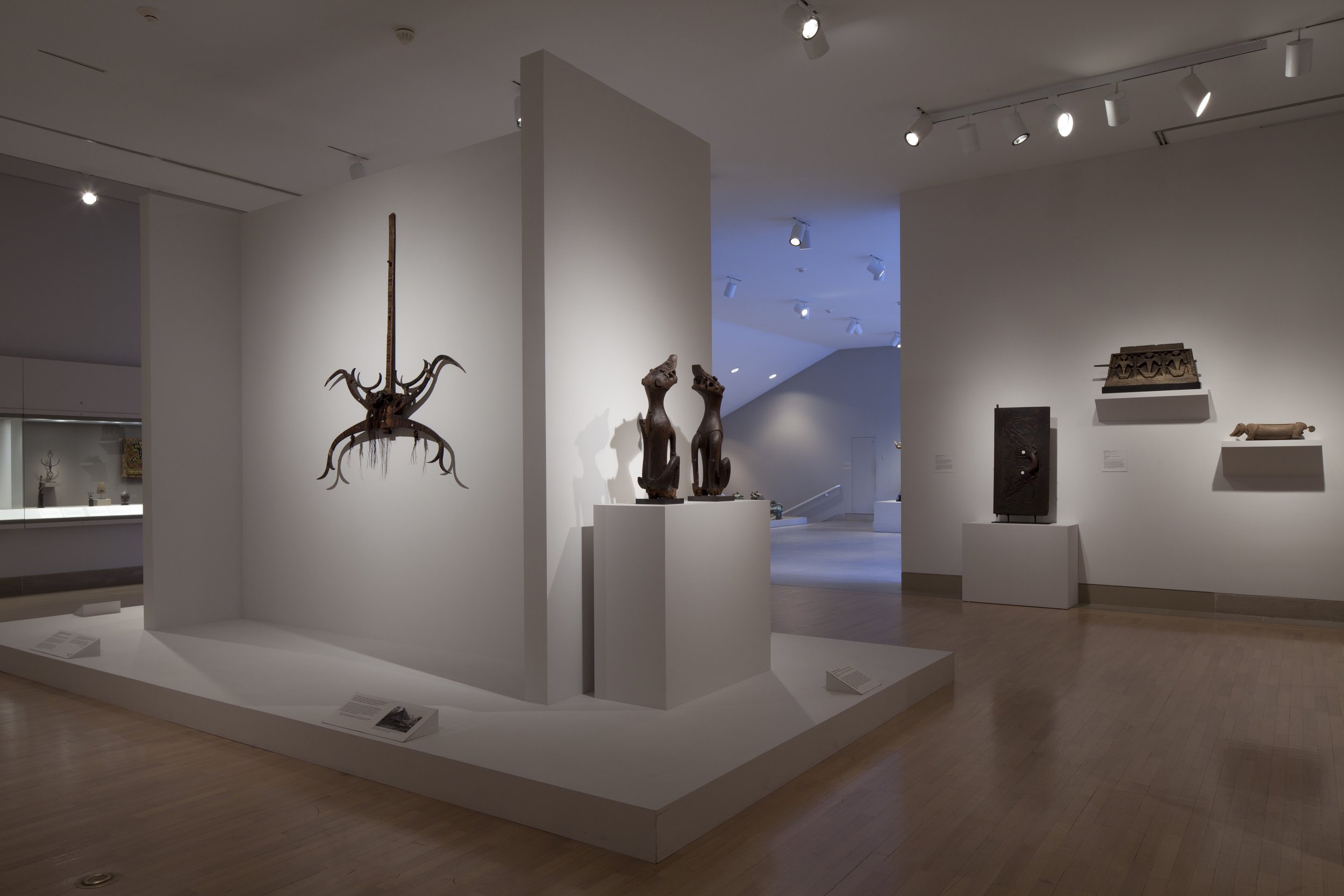
In 1983, the Collector's Statement for Selections from the Steven G. Alpert Collection of Textiles, I wrote: "Whenever possible, an attempt was made to collect older, finer examples of ceremonial textiles that most clearly reflected the spirit and intensity of the archaic Indonesians. I was privileged to know some of the last traditional warriors and their female counterparts, the great weavers. Face to face, it was impossible to escape the realization that one was witnessing an era of poignant change." Being able to meet and fluently converse with such individuals, and becoming involved with diverse cultures on more than simply a transactional basis, has, over the years, helped to inform and educate not only my eye but world outlook and, in the process, support well-reasoned aesthetic choices and good practices. Above all, praise and respect are due to the makers of these incredible creations.
The Dallas Museum of Art is the first Indonesian collection ever to combine a permanent display of sculpture, adornment, and textiles in equal measure. This was purposefully done to respect and reflect the necessity of balancing oppositional principles. These normally include masculine and feminine attributes in proximity with one another at important rituals and rite of passage events in Indonesia. This worldview is so consistent that it exists, to quote the old patriotic saying from Sukarno's era, dari Sabang sampai Merauke, from 'Sumatra all the way to Papua (New Guinea).'
As far as I know, the DMA's collection is the first museum to have a subscription raised by the city's local Indonesian community to acquire a major piece for the museum. On numerous occasions, the Dallas Museum has also supported events promoting Indonesia, including gala events involving three museums, exhibitions, music, dance, and wayang kulit puppet performances to celebrate the inaugural printing of Eyes of the Ancestors (2013).
The collection is also greatly indebted to many scholars, teachers, and generous persons. One could write reams on this topic, but I would like to mention Dr. Reimar Schefold's contributions and his extraordinary fieldwork among the Sakkudei of Siberut, Mentawai. As one peruses and appreciates the diverse material in this collection, two concepts first elucidated by Dr. Schefold are di rigeur to understanding the art of traditional peoples: makire and mateu.
Makire is the Mentawaian word for judging something's aesthetic value. What we would call the finest items are from a horizon where form and function are melded into something truly useful — hence beautiful. The second term, mateu, is, in fact, not a firm point as it equates to the word 'fitting.' 'Fitting' can be something quite literal, as does a carved and embellished door fit its frame and decoration according to its surroundings? Or, it can connote a philosophical but practical rendering of a world where everything was once a living entity and can also be translated as: "Does this (it) fit my soul"? Example: your paddle is just perfect for you, but in my hands, it is too short and therefore cannot be mateu for me. Knowing whether a piece fits your soul is an interesting concept.
In Indonesian and in the language of local traditions, there is no word for "art." Instead, the idea is whether we are making something for ourselves or for the community — to make it as best as it can be made. Everyone knows (It was evident within the community) who that person is who can combine their skillsets with agonal moments (See; Alpert: Eyes of the Ancestors: P. 121) to effect a rare and forceful, yet harmoniously beautiful creation that augurs for a positive outcome. This is what we sought, pieces that were made when someone was in 'the zone' and capable of creating something beyond the prosaic, beyond the mundane. While traditional language surrounding praise may be different from ours, the outcomes in the realm of appreciation are invariably the same.
Art of the Ancestors has featured Indonesian masterworks from over seventy worldwide museums. In many ways, the Dallas Museum of Art's Indonesian collection inspired this joyous adventure. In the United States, one can also see noteworthy items of Indonesian art at the Yale University Art Gallery, The Metropolitan Museum in New York, the Boston Museum of Fine Arts, the Museums of Fine Arts, San Francisco, the Field Museum in Chicago and at university museums, notably the Fowler Museum at UCLA and the Penn Museum at the University of Pennsylvania.
A significant number of the DMA's pieces are illustrated in AOTA's galleries. Still, to more fully appreciate these gems, one has to be conversant with the book, Eyes of the Ancestors. Better yet, a visit to Dallas and to being able to stand directly in front of the material, which is stewarded in three adjoining rooms, makes for an excellent onsite education. Saul Stanoff, one of the greatest eyes ever and a legendary collector of African art, standing before Dallas' most iconic Dayak statue, said to us: "You have so many masterpieces in this collection. Take this one statue. That's a masterpiece for all seasons, for any culture. If you own just one piece of this quality and of such universal meaning, you own an entire collection."
Dallas has so much to offer in its diverse exhibitions and many museums. We hope to see you there. Stay tuned for our continuing exploration of the Island Southeast Asia Collections at the Dallas Museum in our newsletter for May 2022. We will feature and shine further light on the museum's Indonesian and East Malaysian textiles.
1
Sacred Carving with Monkey Skull | Jaraik
2
Memorial Wall Panel with Wooden Figure of a Slain Headhunting Victim | Simoinang Tulangan Sirimanua
3
Memorial Board Representing Deceased Family Members | Kirekat
4
Seated Male Ancestor Figure | Adu Sihara Salawa
5
Chieftan’s Headhunter Torc | Kalabubu
6
Detail of a Chief’s Sword | Balatu Sala
7
Male and Female Protective Figures | Pagar
8
Priest’s Knife Hilt
9
Priest's Staff | Tunggal Panaluan
10
Warrior's Headdress Ornament, Frontal Figure | Tap Lavong Kayo
11
Pair of Mythical Animal Table Legs | Aso
12
Tutelary Figure
13
Standing Guardian Figure | Tepatung
14
Shrine Object with Figure Atop a Dwelling Flanked by Two Mythological Animals
15
Ceremonial Sa’dan Toraja Shield | Baluang
16
Figurative Door
17
Vaunted Ancestor Figure from a Mamasa Aristocrat’s House
18
Gold Crown Ornament | Lamba
19
Stone Memorial | Penji
20
Woman's Gold Earring from West Sumba | Mamuli
21
Pair of Ngada Ancestor Figures | Ana Deo
22
Ancestor Figure | Ai Tos
23
Belu Ceremonial Mask | Biola
24
Spoon of the King of Mandeu | Nura Dikun
25
Ancestor Figure | Itara
26
Ceremonial Ivory Spoon from Eastern Indonesia
27
Porka Festival Mouth Mask | Luhulei
28
Kisar Gold and Trade Bead Necklace
29
Luang Gold Mask Ornament
30
Shrine Figure | Luli | Luang
All artworks and images presented in this feature are the property of the Dallas Museum of Art.
© Dallas Museum of Art


